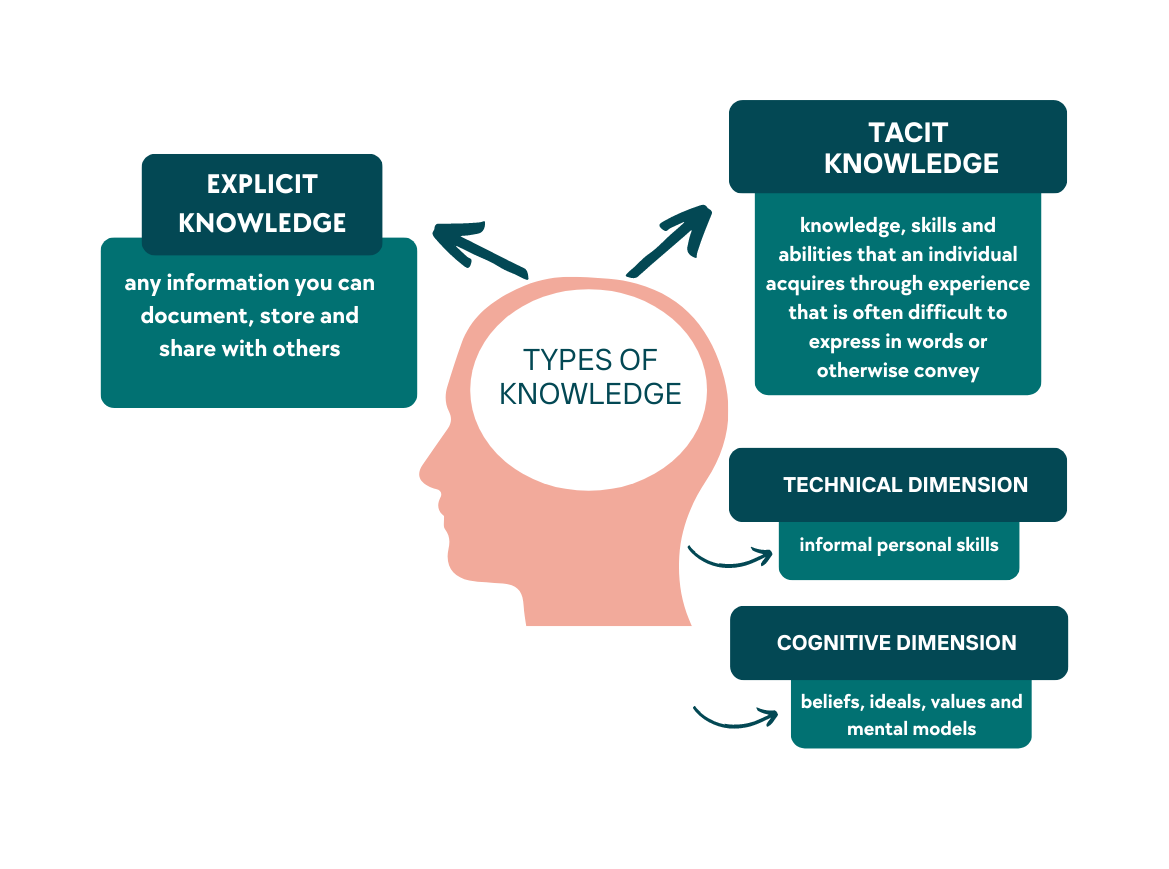|
|
Module 3: Knowledge management in-house and across organisations. |
|
|
Prof. Marina Dabić, Tena Obradović Posinković |
|
|
For the successful implementation of open innovation activities, it is not enough for SMEs to cooperate with external partners and exchange their ideas, technology, and knowledge. Small and medium-sized enterprises also need to develop capabilities, enable their employees to acquire knowledge and manage existing and newly acquired knowledge. Knowledge management helps managers control knowledge within their organizations, but also knowledge available outside their companies. In this module SMEs from bioeconomy and agri-food industry can learn about the types of knowledge, but also get advice for managing in-house knowledge, as well as knowledge across organizations. |
|
Upon completing this module, you should be able to: |
|
Knowledge management from the open innovation perspective
The open innovation paradigm embodies a more participatory approach to innovation in which companies do not rely only on their internal resources but are willing to share their ideas and knowledge with external partners. Moreover, companies have realized that knowledge is distributed worldwide and that the concept of open innovation is a cost-effective way to innovate. The innovation paradigm shift has encouraged companies to use knowledge and resources that exist outside of their borders and has inspired academics to further develop this concept.
Moreover, companies have realized that it is not enough to have the right knowledge, technologies, or ideas, but that they must be actively managed if companies are to benefit fully. Organizations are involved in knowledge management in order to control the knowledge within their organizations, but also the knowledge available outside their enterprises. Of all the imaginable resources that a company possesses, knowledge is recognized as the resource that most positively affects the company’s results[1].
Knowledge can be divided into tacit and explicit knowledge. Explicit knowledge includes any information that can be documented, stored, or shared with others (for example an instruction manual, spreadsheet of data), while tacit knowledge refers to knowledge, skills and abilities that an individual acquires through experience that is often difficult to express in words (for example leadership, learning a new language)[2]. Tacit knowledge can be divided into technical and cognitive dimensions. Figure 1 shows the types of knowledge.

Figure 1: Types of knowledge[3]
Source: Nonaka, I. (1994). A dynamic theory of organizational knowledge creation. Organisation Science, 5(1), 14–37. http://dx.doi.org/10.1287/orsc.5.1.14
The open innovation paradigm offers a solution for small and medium-sized enterprises, especially in the bioeconomy and agri-food industry where knowledge is very specific. Therefore, with the OI paradigm, SMEs have the opportunity to sell knowledge that they do not use but already possess in their company. Moreover, through OI activities, SMEs can buy the technological know-how they need for further development of products and services.
Take a 3-5 minutes and think:
1. How can your SME benefit from knowledge management in-house and across organisations?
2. Explain your explicit and tacit knowledge and think about what constitutes your competitive advantage?
Think how could you explain these terms to another person and write it down.